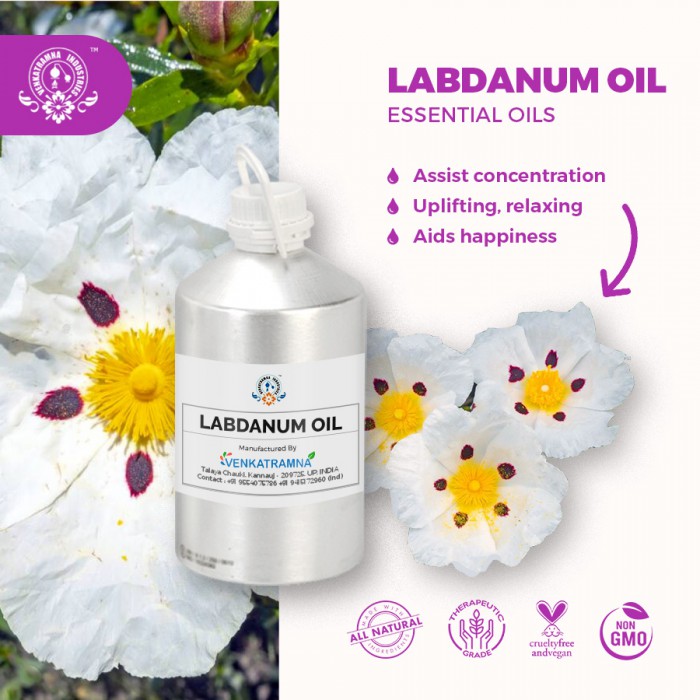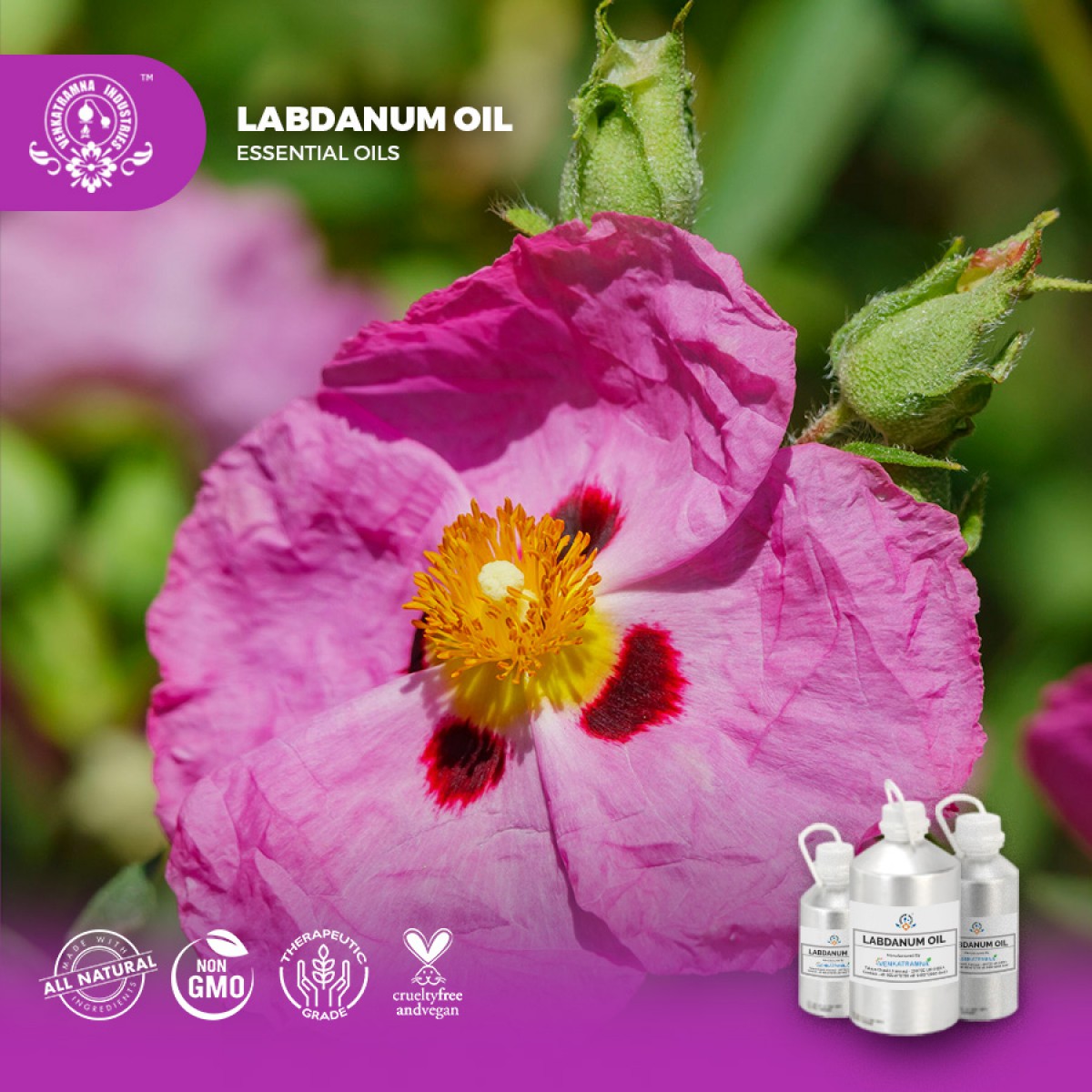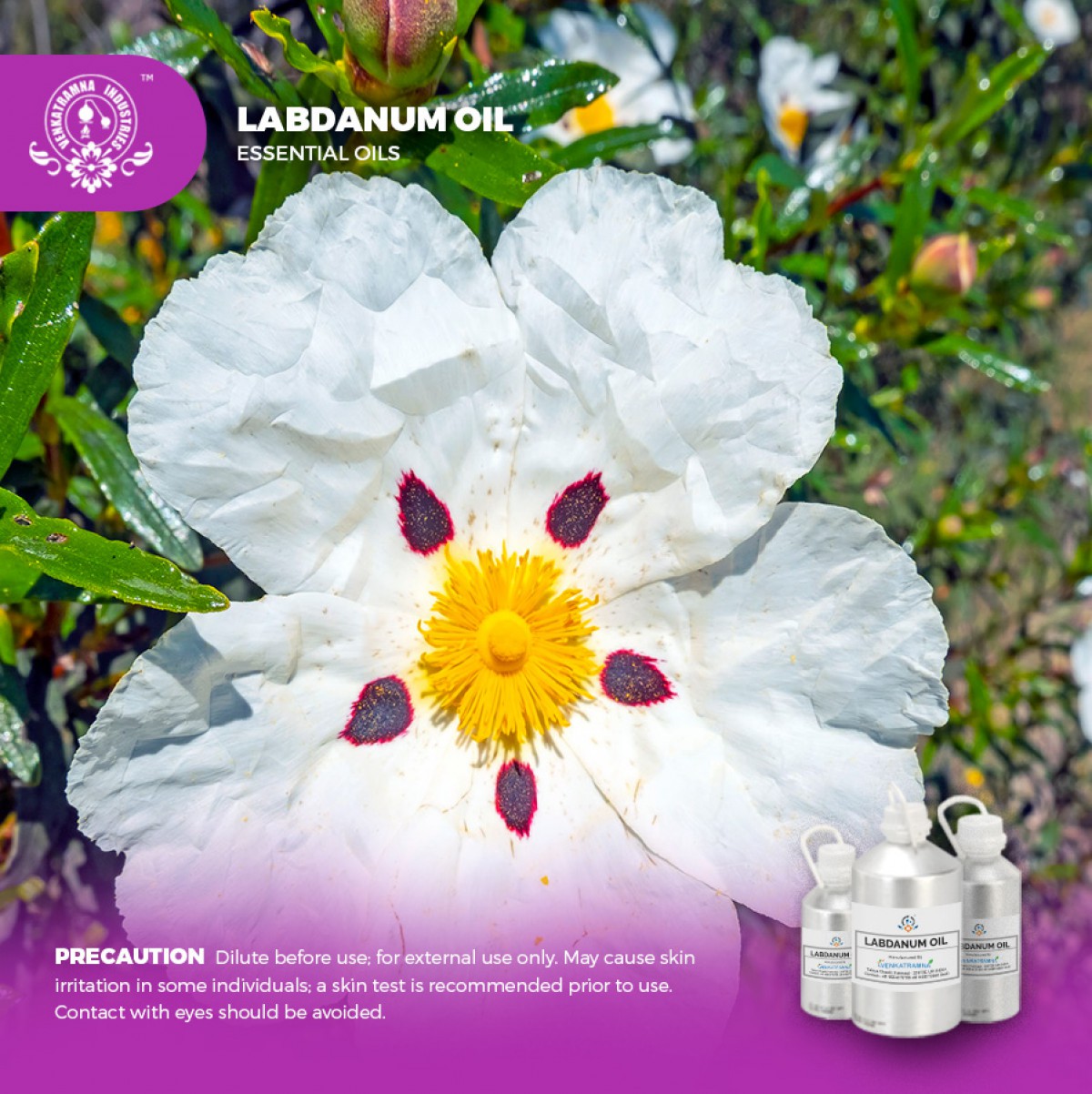Botanical Name: Cistus Ladanifer Common name: Gum rockrose, Rock rose Oil, Labdanum Read More
|
Botanical Name: |
Cistus Ladanifer |
|
Common name: |
Gum rockrose, Rock rose Oil, Labdanum |
|
Plant
family: |
Cistaceae |
|
Genus: |
Laurus |
|
Appearance/Color: |
Yellow brown to
brown clear liquid |
|
Odor: |
Spicy-sweet, somewhat
dry, musky, slightly leathery |
|
Blends With: |
Frankincense,
Sandalwood, Myrrh, Patchouli, Pine, Cypress, Clary Sage and Vetiver |
|
Origin: |
France |
|
Source: |
Gum from leaves and terminal branches |
|
Method of Extraction: |
Steam Distillation |
Cistus
Ladanifer essential oil is one of the most
interesting and valuable products that can be obtained from the Cistus
Ladanifer plant. There are several methods to obtain this oil, however, all
of the producers in Portugal that we know get their Cistus Ladanifer essential
oil by using steam distillation. This distinction is important as Cistus
Ladanifer resins obtained through other methods can also be steam distilled
to produce oils.
Cistus Absolute, also frequently referred to as Labdanum Absolute, is also commercially available. It's much thicker in consistency. The solvent extraction process used to create the absolute is able to capture more of the heavier aromatic molecules than can be captured during steam distillation. To me, the aroma of the absolute is sweeter, deeper and much more balsamic in aroma. Everyone is different in how essential oils impact them emotionally. Your experience with Cistus Absolute may differ.
DISCLAIMER
The complete range of conditions
or methods of use are beyond our control therefore we do not assume any
responsibility and expressly disclaim any liability for any use of this
product. Information contained herein is believed to be true and accurate however,
all statements or suggestions are made without warranty, expressed or implied,
regarding accuracy of the information, the hazards connected with the use of
the material or the results to be obtained from the use thereof. Compliance
with all applicable federal, state, and local laws and local regulations
remains the responsibility of the user.
The FDA has not evaluated the
statements on this website. No claims are made by Venkatramna Industries as to
the medicinal value of any products from vriaroma.com or by us. The information
presented here is for educating our customers about the traditional uses of
essential oils and is not intended to diagnose, treat, cure, or prevent any
disease. You are responsible for understanding the safe application of these products.
If you have any questions, please call or email us for further information.
As per NAHA guidelines, New Directions Aromatics
(NDA) does not recommend the ingestion of essential oils. It is imperative to
consult a medical practitioner before using Essential Oils for therapeutic
purposes. Pregnant and nursing women and those taking prescription drugs are
especially advised not to use this product without the medical advice of a
physician. The oil should always be stored in an area that is inaccessible to
children, especially those under the age of 7.
Cistus essential
oil shows antimicrobial properties against Staph, E. Coli and Candida. Cistus
is known for its wound healing abilities. Effective for chronic conditions
like psoriasis & eczema. Cistus acts fast to stop the bleeding from a fresh
wound. It increases lymph drainage, is beneficial for acne & oily skin,
as well as wrinkles & mature skin. Can be used for coughs, colds &
bronchitis as well.
The Egyptians,
after importing Cistus from Crete, used the resin as a perfume & incense.
It is said that in Christ’s time, an incense was made with Myrrh, Frankincense
& “Onycha”, later identified as gum labdanum, which is extracted from the
leaves of Cistus. It has been used since the Middle Ages in Europe to
treat wounds & ulcers of the skin. The gum was used for diarrhea,
dysentery, & catarrh. Cistus is believed to help alleviate shock from
traumatic events, and soothes the heart after a crisis, especially when someone
is feeling cold, empty & numb. It’s beneficial for meditation, as it has
centering qualities that help one to visualize, and to bring those vision to
light. Woodward suggests using Cistus with those who experience a disconnection
from their spiritual self & being in fear. Helps to connect to the spirit
realms with ease.
Cistus Essential
Oil is an intriguingly complex, rich balsamic oil that is well suited for use
as a fixative in natural perfumery and fragrancing applications. It blends well
with a number of other oils especially those in the wood, spice and floral
families. It has also been used as a fixative for perfumery.
COMMON USAGE
·
Menstrual Problems
·
Rheumatism
·
Coughs and colds
·
Skin conditions
·
To relieve stress and calm the
mind
Ingredients:
|
S.No |
Key Constituents |
Strength (%) |
|
1 |
a-Pinene |
4.9–44.0 |
|
2 |
3-Phenylproprionic acid |
0–22.2 |
|
3 |
Camphene |
1.4–7.0 |
|
4 |
a-Selinene |
0–6.4 |
|
5 |
p-Cymene |
2.1–6.3 |
|
6 |
Caryophyllene oxide |
0–4.4 |
|
7 |
Viridiflorol |
1.4–3.7 |
|
8 |
Heptyl vinyl ketone |
0–2.9 |
|
9 |
a-Terpineol |
0–2.4 |
|
10 |
Fenchone |
1.4–2.3 |
|
11 |
Bornyl acetate |
1.2–2.1 |
|
12 |
2,2,6-Trimethylcyclohexanone |
1.7–2.0 |
|
13 |
a-p-Dimethylstyrene |
0–1.9 |
|
14 |
Pinocarveol |
0–1.8 |
|
15 |
(Z)-Tagetenone |
0–1.8 |
|
16 |
Terpinen-4-ol |
0–1.8 |
|
17 |
Benzyl 3-phenylpropionate |
0–1.7 |
|
18 |
(E)-Cinnamic acid |
0–1.4 |
|
19 |
Borneol |
1.1–1.3 |
|
20 |
Pinocamphone |
0–1.3 |
|
21 |
Verbenone |
0–1.2 |
|
22 |
Verbenone |
0–1.2 |
|
23 |
Ledol |
0–1.1 |
|
24 |
Germacrene |
D 0–1.0 |
Safety
summary
·
Hazards None known.
·
Contraindications None known
Safety advice:
Recommended
dermal maximum of 0.5% and an oral maximum of 18 mg, based on 3.8% methyl
eugenol content with dermal and oral limits of 0.02% and 0.01 mg/kg.
Regulatory guidelines:
IFRA recommends
that the maximum concentration of methyl eugenol for leave-on products such as
body lotion should be 0.0004%. The equivalent SCCNFP maximum is 0.0002%.
Organ-specific
effects
·
Adverse skin reactions: Undiluted labdanum oil was moderately irritating to rabbits;
tested at 8% on 25 volunteers it was neither irritating nor sensitizing. It is
non-phototoxic.
Systemic
effects
·
Acute toxicity: Non-toxic. Labdanum oil acute oral LD50 in rats
8.98 g/kg; acute dermal LD50 in rabbits >5 g/kg. 3- Phenylproprionic acid
acute oral LD50 in mice 1.6 g/kg.
·
Carcinogenic/anticarcinogenic
potential: Not Known
·
Acute fish toxicity:
LC50 / 96 HOUR – No data availab





 MSDS-Labdanum.pdf
MSDS-Labdanum.pdf




